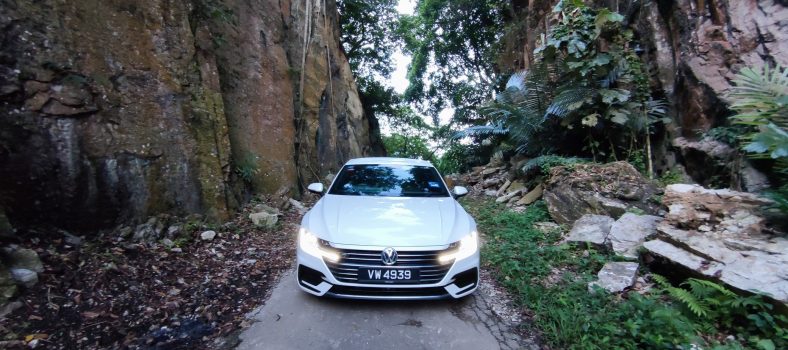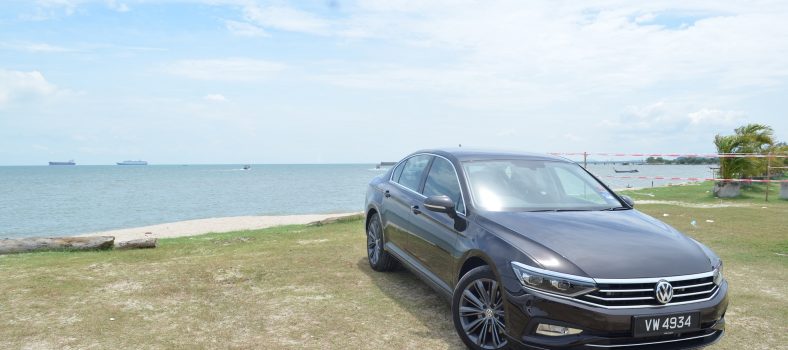Buying a car has always been an exciting affair. Well at least for me it is. With the budget I have in mind, it seems like I have endless possibilities to consider …. but really, what are your options?
It’s no surprise that over here in Malaysia, car prices are heavily taxed and the public are left with little choice but to take 5, 7 some even up to 11 years to finance their vehicle purchase. It’s small wonder those who hail from overseas shakes their heads when they look at our price list (those reading from other countries, just divide the numbers by 3 and you have the USD equivalent. If you still think that’s cheap, do note that the average income of an average Malaysian is about USD1,000 per month so consider the cost of living vs vehicle repayment).
Sadly, our public transport service is far from being ideal and getting a car is unavoidable. So what’s can our money buy? The following is a compilation of vehicles based on budget. It certainly was not easy and I had to make a few assumptions:-
1) The interest rate is calculated at 3%. Some manufacturers subsidize some interest and can offer lower than 2.5%. Please check with your respective sales representative (SA) for a more thorough calculation
2) Vehicle prices are not static. Some offers discounts, some special incentives so again, check with the SA
3) Pick-up trucks are excluded from this listing
4) Cars priced above RM200,000 are excluded since a majority of the population can’t afford it.
5) Qualification for bank loan is 1/3 of nett monthly salary (previously by using Gross salary, it was easier to obtain a loan. Nett refers the final amount that goes into your bank account and can be proven by bank statements. Gross on the other hand allows manipulations such as claims, EPF, Socso, etc which inflates the spending capacity of an individual)
6) Everyone takes the maximum 90% loan with 10% downpayment
7) This is a NEW car purchase statistic – 2nd hand purchases are not included
Again: Prices may not be accurate, especially considering some manufacturers advertise their prices with (or without) insurance. The writer holds no responsibility in ensuring the data is 100% correct so please re-check on your own.
Vehicles available:
Sedan – Proton Saga 1.3 FLX (M) Sdn
Hatchback – Perodua Viva 660, 850, 1.0/M Elite
Owner’s budget: RM50,000 (± RM10,000)
Vehicles available:
Sedan – Proton Saga 1.3 & 1.6, Proton Persona, Proton Gen 2, Proton Preve IAFM+ (M),
Hatchback – Hyundai i10, Perodua Viva 1.0 (A) Elite upwards, Perodua Myvi, Proton Satria Neo (except Neo R3), Suzuki Alto
MPV – Proton Exora 1.6 CPS (M)
Owner’s budget: RM70,000 (± RM10,000)
Vehicles available:
Sedan – Ford Fiesta, Hyundai Accent 1.6, Kia Forte 1.6 EX, Peugeot 207 1.6, Proton Preve CFE, Proton Inspira 1.8 (M), Mazda 2, Toyota Vios 1.5J
Hatchback – Ford Fiesta, Mazda 2, Satria Neo R3 1.6 CPS, Suzuki Swift
MPV – Perodua Alza, Toyota Avanza
SUV – Chery Tiggo 1.6 (M)
Owner’s budget: RM90,000 (± RM10,000)
Vehicles available:
Sedan – Chevrolet Cruze, Honda City 1.5, Hyundai Elantra 1.6, Kia Forte 1.6SX & 2.0, Mazda 3 1.6, Proton Inspira 2.0P
Hatchback – Hyundai i30 1.6 (A), Nissan Latio, Peugoet 308 VTi
MPV – Chery Eastar, Kia Rondo 2.0, Nissan Grand Livina, Nissan Livina X-gear, Toyota Rush
SUV – Chery Tiggo 2.0 (A)
Crossover – Suzuki SX4
Hybrid – Honda Jazz Hybrid, Toyota Prius C
Owner’s budget: RM110,000 (± RM10,000)
Vehicles available:
Sedan – Ford Focus 2.0L Ghia, Honda Civic 1.8S, Hyundai Elantra 1.8, Mitsubishi Lancer 2.0 EX, Nissan Sylphy 2.0 XL, Toyota Altis 1.6 & 1.8
Hatchback – Ford Focus 2.0L Sport, Honda Jazz 1.5, Hyundai i30 2.0, Mazda 3 1.6, Nissan Impul Latio, Peugeot 308 THP, Volkswagen Polo
MPV -Honda Freed 1.5, Nissan Grand Livina
SUV -Suzuki Grand Vitara 2.0
Coupe – Kia Forte Koup
Owner’s budget: RM130,000 (± RM10,000)
Vehicles available:
Sedan – Honda Civic 2.0, Hyundai Sonata 2.0 Std, Mazda 3 2.0, Mitsubishi Lancer 2.0 GT, Nissan Impul Sylphy
Hatchback – Citroen C4 1.6 Turbo, Ford Focus 2.0 Sport TDCi, Volkswagen Polo GTi
MPV – Nissan Serena 2.0 Comfort
SUV – Hyundai Tucson 2.0, Kia Sportage
Hybrid – Toyota Prius 1.8
Owner’s budget: RM150,000 (± RM10,000)
Vehicles available:
Sedan – Honda Accord 2.0, Hyundai Sonata 2.0 HS, Kia Optima K5 2.0, Mazda 6 2.0, Nissan Teana 2.0, Suzuki Kizashi, Toyota Camry 2.0, Volkswagen Jetta 1.4 TSi
Hatchback – Alfa Romeo Mito, Volkswagen Golf 1.4 TSi
MPV – Citroen Picasso, Hyundai Starex Royale 2.5, Mazda 5 2.0, Nissan Serena 2.0 HS
SUV – Chevrolet Captiva 2.4 AWD, Hyundai Tucson 2.4, Kia Sorento 2.5, Mitsubishi ASX 2.0
Station-wagon – Mitsubishi Lancer Sportback 2.4
Crossover – Peugeot 3008
Hybrid – Toyota Prius HS
Owner’s budget: RM170,000 (± RM10,000)
Vehicles available:
Sedan – Ford Mondeo 2.0 Ecoboost, Honda Accord 2.4, Mazda 6 2.5, Nissan Teana 2.5, Toyota Camry 2.5, Volkswagen Passat 1.8 TSi, Volvo S40
Hatchback – Audi A1 1.4 TFSi, Mazda 3 MPS,
MPV – Mitsubishi Grandis 2.4, Volkswagen Cross Touran 1.4 TSi
SUV – Hyundai Santa Fe, Toyota Fortuner 2.5G,
Hybrid – Lexus ct200h
Owner’s budget: RM190,000 (± RM10,000)
Vehicles available:
Sedan – Alfa Romeo 159, Citroen C5, Skoda Octavia vRS, Subaru Impreza 2.0
Hatchback – Mini Cooper, Renault Clio RS 200 Cup 2.0, Volkswagen Scirocco 1.4 TSi
MPV – Ford S-Max 2.0 Ecoboost, Mazda 8 2.3
Station-wagon- Volvo V50
Convertible- Peugeot 308CC
Interesting enough, when we see the data arranged in this manner, we can conclude the following:-
1) The cheapest D segment car is the Hyundai Sonata 2.0 Std (RM135,888)
2) The cheapest convertible you can buy is the Peugeot 308CC (RM186,888)
3) The cheapest MPV you can buy is the Proton Exora 1.6 CPS (M) (RM59,548)
4) The cheapest SUV is the Chery Tiggo 1.6 (M) (RM78,888)
5) The cheapest Hybrid is the Honda Jazz Hybrid (RM94,800)
6) Largest C segment contenders are in the RM100k – RM120k range
7) Largest D segment contenders are in the RM140k – RM160k range
8) If the average Malaysian earns RM3k a month, the highest they can afford is a car worth about RM100,000. Sell below this range and you can aim for mass market.
So there you have it. It would be interesting to relook at this comparison 1 year later and see how the chart has moved. Hope this has helped you in your decision.
Source:
The Star Rev section
star-motoring.com
I would be most honored and grateful if you could visit https://www.facebook.com/Kensomuse and Like the page to show your support and receive updates on the latest articles. Comments are most welcomed. Thank you very much!





9 Comments
Interesting analysis you have there Bro and bound to be a useful tool for some. I am in the midst of doing a whole of life cost comparison for some models but getting some of the info from dealers and distributors is like pulling your own teeth!- Why are so many afraid to reveal their maintenance costs per service interval?
I guess part of the reason is sales don't really talk to after sales, not so much about not willing to share that information. Furthermore, different dealerships may have different service/labor costing so the data may not be accurate. You've set yourself a very challenging task, bro.
Ya I totally agree with you different dealerships may have different service/labor costing so the data may not be accurate. In India Tata safari strome makes a complete package of cost and its interiorand and Vehicle price also static.
Tata Safari Storme
wow…
i think your estimation way out man…
you must include cost of living + educations
max monthly commitment for car + house loans cannot exceed 30% of monthly income..
monthly income of only Rm10+k per month to buy a rm200k car in 5 yrs?!!!
how much is the downpayment and monthly payment???
no way possible!
Hi Miah,
Thanks for sharing your views. As the article focuses only on automotive financing and not lifestyle financing, I leave it to readers to decide for themselves what they can and cannot afford in choosing the right car for themselves.
As for the RM200k repayment, feel free to do the calculations yourself. RM200,000 minus RM20,000 downpayment, loan of RM180,000 multiply by 12.5% interest over 5 years divide by 60 months then multiply by 3 (30% income).
You might want to recheck the "car+house loan" cannot exceed 30% monthly income:
http://paultan.org/2012/02/23/proton-edar-dealers-association-reports-only-30-loan-approval-rate-in-jan-asks-for-review-of-bnm-guidelines/
hi
with housing cost more than Rm400k+(rm2k+/month).. people might need to rethink about buying a Rm200+k car with only monthly salary less than Rm10k per month
as per above guide- paying Rm3+k per month for a car – out of Rm10k per month salary is totally ridiculous.
this guide is indeed misguided..
for good financial management – both car + house loan payment should not exceed 30% of NET take home salary…
so with RM10 per month – take home salary around Rm8k per month – 30% = Rm2400 per month max for car + house loan;
estimate
Rm1.4k per month for Rm300k house
and RM1k per month for Rm100+k car..
more realistic!
Hi Miah …. I see you completely miss the point of this guide. As I have said before, this is not a financial guide; instead an indicative guide of the options available based on the earning capacity a person has as stipulated by the banks.
Your opinion about 30% income for house + car loan is entirely your own personal view and is neither right or wrong. You cannot fault a person for spending, say 50% of his income on a property which is an investment and 5% on a budget 2nd hand car. Similarly, one financial planner (which I am not) may have a totally different retirement plan for an individual as another planner. Each person has his/her own needs and conditions
It is these ambiguous (and highly arguable) comments about what's right and wrong that I choose to avoid in my articles.
hi kenso,
just seeking clarification based on your guide.
given the new BNM regulation of car repayment not more than 1/3 of nett monthly salary, the owner's monthly salary in your guide refers to nett salary right?
perhaps stating owner's nett monthly salary would be clearer to readers.
also perhaps adding more details of what being meant by nett salary.
first time reading, i knew my budget is totally different between gross and nett salary huhu
Hi malowar,
Very good point! I have edited the article so that it gives a brief explanation on nett vs gross (assumption no 5). Thanks for the feedback!